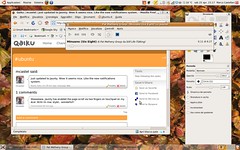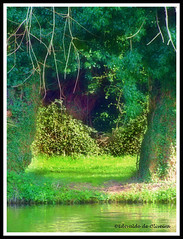I should admit that the upgrade to the most recent version of Ubuntu wasin my case a nice surprise. First of all, it took place in a really
simple and unproblematic way. Second, after the reboot of my system (a”not-so-new” Acer Aspire 3634 laptop) I discovered with pleasure thatthe “suspend mode” was now fully supported!
Another “out-of-the-box” nice suprise (which came completely unexpected) was the gained “two finger” scrolling mode in the touchpad (I can now scroll long pages with the coordinate movement of two finger, in the same way Max OS works). Really a great feature, enough to make me prefer the boot with linux in respect to Windows 😉
I just want to stress that all this took place without abstruse operations from the command line: this is surely a good thing, since for too long has been suppose that Linux was good for “geek” people and not for the majority of “normal persons”; I mean, persons who mainly use the computers to work or play, but normally do not dream at night (or, every night…) how to install the latest GNOME test release just got from the CVS repository.. 😉
I did appreciate also the new notification system (ok, it seems has been copied from Max OS.. but if something is good, why not to copy it?), working with a semitransparent window that opens at the top right of the desktop. Very useful, and I just discovered applications that take fully advantage of this new feature.
Overall, my assesment is (as you can easily guess) quite positive.
Let’s admit, linux on desktop has done many step forward in recent years (and I can certainly say it since I am following it from a good amount of time…). In my opinion, if the hardware is properly recognized and managed (which in passing may still be a problem in many cases, since modern computers came with a lot of different devices, microphones, sound, graphics, 3D accelerations.. in many cases with proprietary drives) nowadays a computer (or laptop, or netbook) with a modern version of linux correctly installed, is not second to any other alternative, including not only Windows but also Mac OS X…
…what do you think, I’m exaggerating ? 😉
has finally come out and mocked the idea.




